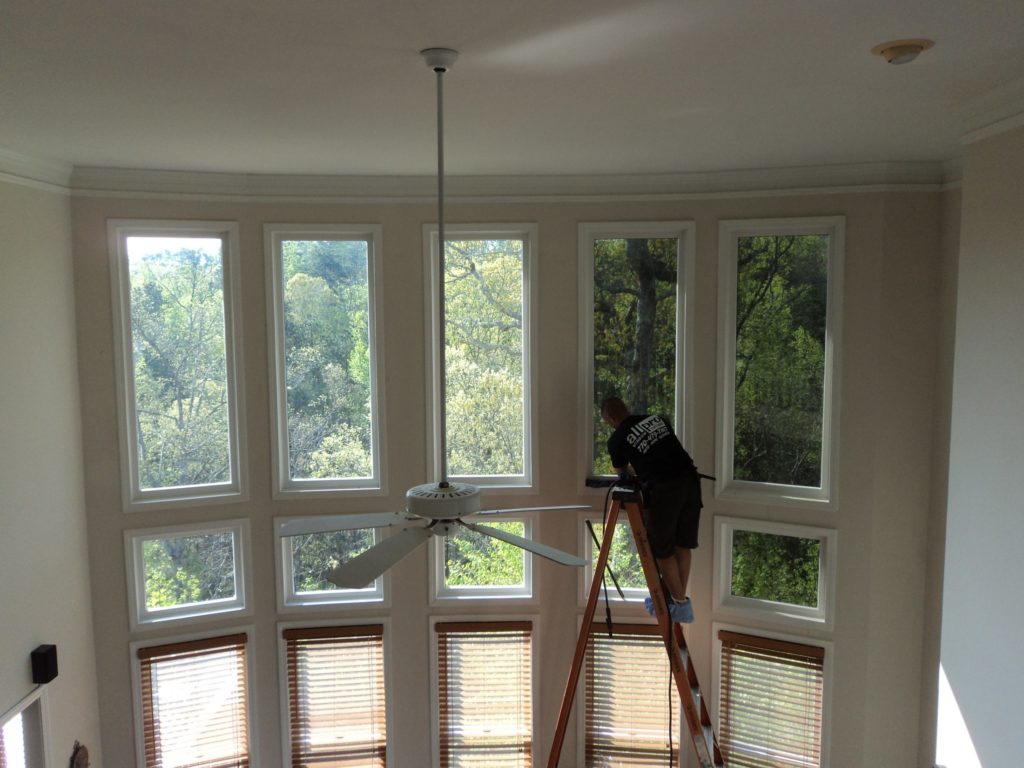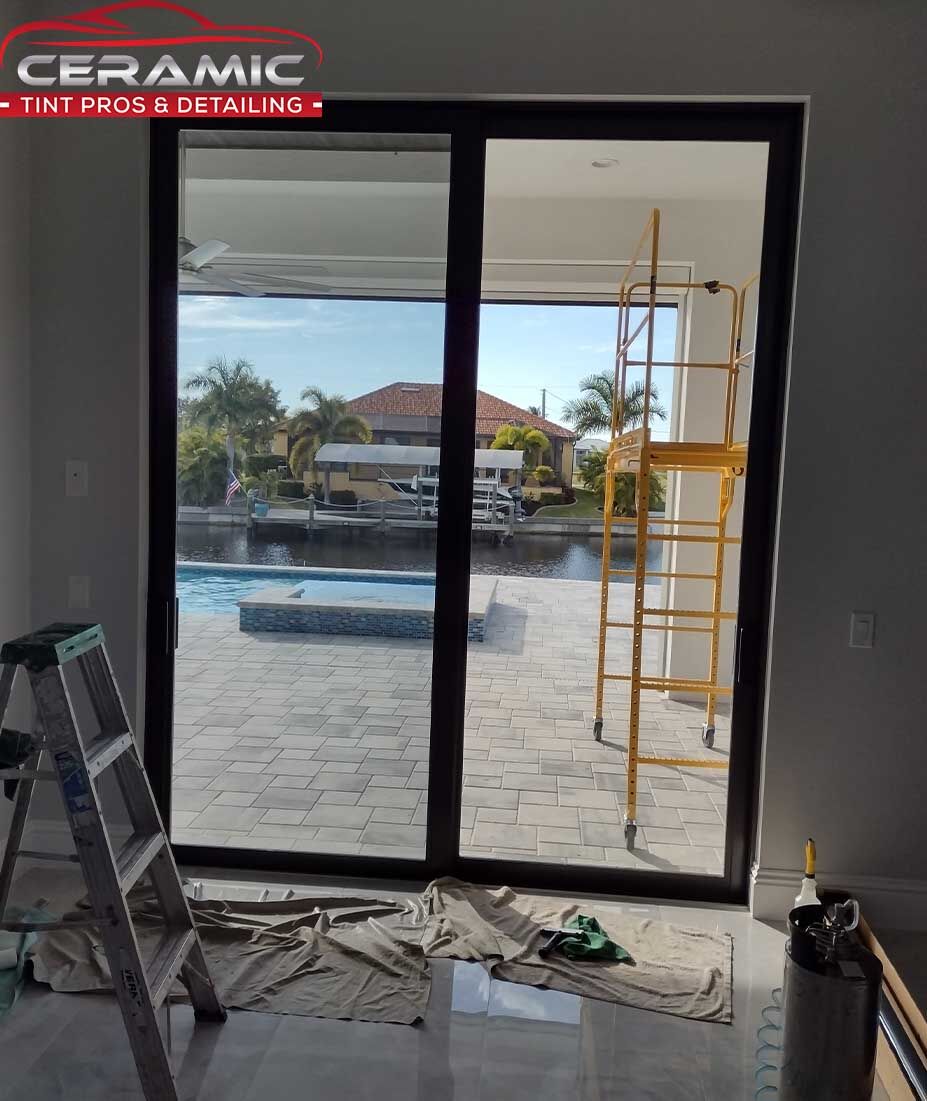Just How Residential Window Tint Can Reduce Energy Costs
Just How Residential Window Tint Can Reduce Energy Costs
Blog Article
How Residential Home Window Tinting Improves Your Home's Power Efficiency
Residential window tinting provides an engaging solution for property owners seeking to improve power performance within their living spaces. By applying specialized films to windows, it successfully lowers warmth transfer, thus stabilizing indoor temperatures and decreasing the need for excessive heating or cooling.
Comprehending Home Window Tinting
Comprehending home window tinting is crucial for homeowners seeking to enhance both comfort and power efficiency in their living spaces. Residential Window Tint. Window tinting involves the application of a thin movie to the inside or outside surface area of glass home windows. This movie can dramatically regulate the quantity of sunlight and warm that enters a home, thus influencing indoor environment conditions
There are numerous kinds of home window tinting movies offered, each with unique residential or commercial properties. Colored movies take in solar energy, while reflective movies disperse it away from the glass surface area. Ceramic movies supply a balance of visibility and heat denial, making them a preferred option among homeowners. The performance of window tinting is frequently measured by its Visible Light Transmission (VLT) percent, which suggests just how much light can go through the movie.
Benefits of Power Effectiveness
Home window tinting not only boosts aesthetics but additionally plays a significant function in boosting power efficiency within household areas. By lowering warm transfer via windows, colored films produce an extra stable interior environment, which can cause substantial reductions in power consumption for home heating and air conditioning. This energy effectiveness translates into reduced utility expenses, giving property owners with significant long-lasting financial savings.

Furthermore, window tinting enhances the comfort of living areas. By decreasing glare and obstructing harmful UV rays, tinted home windows develop a more positive atmosphere, which can result in improved wellness for residents. The protection versus UV rays likewise helps maintain furnishings and flooring from fading, adding to the durability of house products.
How Tinting Functions
Tinting films operate via a mix of sophisticated materials and modern technologies designed to control the amount of solar power going into a home. Primarily composed of polyester, these movies often incorporate metal or ceramic bits that absorb and show heat. This double capacity enables them to significantly minimize the infiltration of ultraviolet (UV) rays and infrared radiation while permitting noticeable light to pass through.
The efficiency of home window tinting is measured by its solar warm gain coefficient (SHGC), which indicates exactly how much solar power is transmitted with the home window. Reduced SHGC values are better as they denote higher warmth rejection. Furthermore, home window colors can include a variety of shades, permitting homeowners to personalize their visual choices while boosting energy efficiency.
Moreover, these movies work as a barrier, avoiding warm loss throughout colder months by reflecting interior warmth back into the space. This thermal insulation result enhances the air conditioning advantages gained during warmer months, contributing to a balanced indoor climate year-round. By managing solar energy efficiently, property home window tinting not just boosts convenience yet likewise plays a crucial duty in lowering power intake and decreasing energy costs.
Picking the Right Color

There are different types of window movies available, including colored, metalized, and ceramic. Colored films are cost-efficient however might have limited toughness. Metalized films provide far better heat being rejected yet can disrupt electronic signals. Ceramic movies provide exceptional warmth control without compromising exposure and are highly long lasting, making them a preferred choice.
Visible light transmission (VLT) is an additional important aspect, learn this here now as it shows the amount of all-natural light that can travel through the colored glass. House owners need to select a tint with a VLT that complements their lighting preferences while still offering sufficient glare reduction.
Additionally, evaluating the solar warm gain coefficient (SHGC) can assist identify exactly how well a tint can block heat from sunlight. A reduced SHGC shows far better warmth control, inevitably boosting power effectiveness.
Installation and Upkeep Tips
Proper installment and maintenance are essential components in maximizing the advantages of residential home window tinting. Professionals likewise make use of specialized tools and strategies, which can boost the sturdiness and effectiveness of the tint.
Following setup, upkeep is crucial to prolong the life of the window film. It is suggested to wait at the very least 30 days prior to cleansing the colored windows to allow the adhesive to cure completely.
Resolving these concerns promptly can stop additional damage and keep power performance. By sticking to these installment and upkeep ideas, property owners can ensure their home window tinting proceeds to supply considerable energy savings and you could try this out convenience for years to come.
Final Thought
In final thought, property window tinting functions as a reliable option for enhancing power effectiveness within homes. By decreasing heat transfer and obstructing dangerous UV rays, window films contribute to decrease energy consumption and boosted indoor convenience. The choice of appropriate tinting products, together with proper setup and maintenance, additionally makes useful link the most of these advantages. Eventually, home window tinting represents a lasting investment that not just reduces energy expenses yet likewise advertises a comfortable living setting throughout the year.
Home window tinting entails the application of a thin film to the inside or outside surface of glass windows. By minimizing warm transfer through home windows, tinted movies create an extra steady interior climate, which can lead to substantial decreases in energy usage for home heating and cooling.The effectiveness of window tinting is gauged by its solar warmth gain coefficient (SHGC), which indicates exactly how much solar power is sent via the window. By taking care of solar energy effectively, household window tinting not just improves convenience however additionally plays a crucial duty in lowering power consumption and reducing energy expenses.
By minimizing warmth transfer and obstructing harmful UV rays, window films contribute to lower energy consumption and enhanced indoor comfort.
Report this page